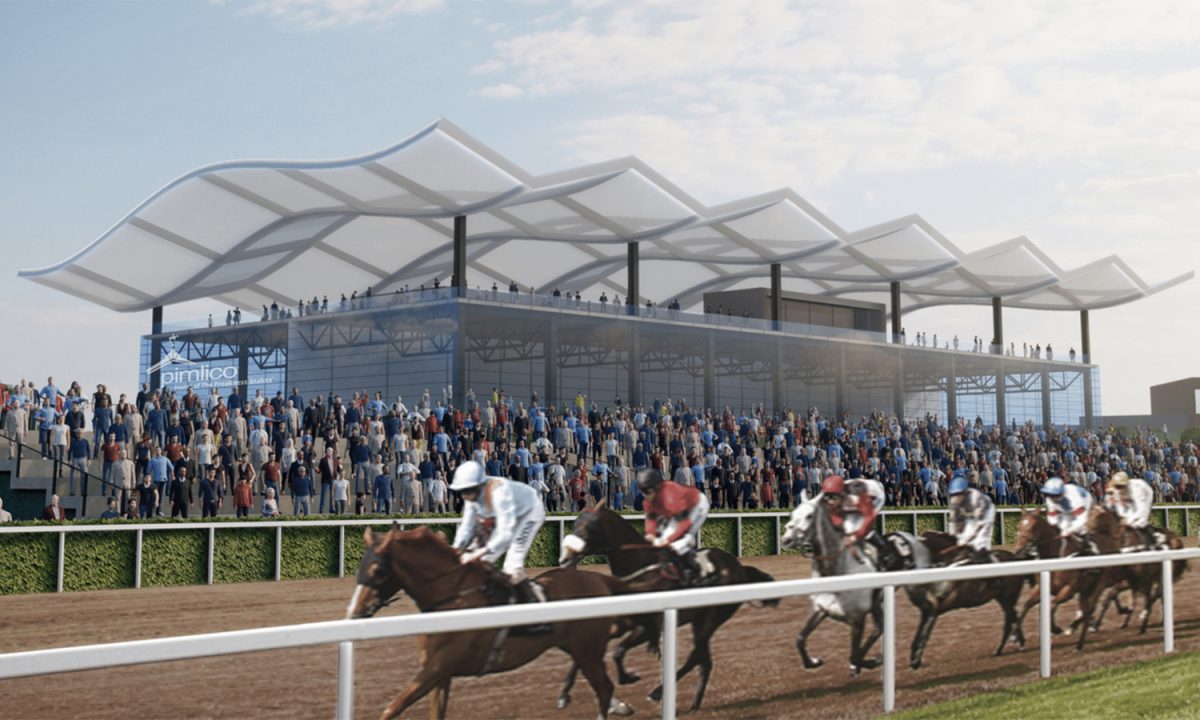
With the recent announcement that Pimlico Race Course will be staying in Baltimore for the foreseeable future comes a ripple effect that contains multiple layers.
There is the obvious—that a Baltimore landmark and longstanding tradition will remain in the city. As part of the agreement, The Stronach Group has turned over the rights of the entire Pimlico facility to city officials. Plans also call for a new clubhouse that will be available to the community for use in non-racing months. The track would be rotated 30 degrees, creating new parcels with the idea of building on the land. As far as the Laurel Park track is concerned, comprehensive renovations surrounding the more day-to-day operations are a top priority.
With this stability, those involved in negotiations will now apply the information they have gathered from Park Heights officials to institute a plan that fills voids within the community —including a new grocery store, a hotel in the area surrounding Sinai Hospital, and a few sit-down restaurants to help stimulate development.
“If the mixed-use plan is done carefully, it’ll be a real catalyst for revitalizing Park Heights,” says Marty Azola, a local preservationist on the board of the Maryland Historical Society, and an expert on adaptive reuse.
For a long time, the Pimlico renovation project lacked momentum as the city and owners engaged in often contentious negotiations that were centered around funding, how that money should be used, and who would be in charge of distributing it. It’s a gamechanger for developers who have been reticent to come to Pimlico due to poor and outdated infrastructure.
“The recommendations of the plans we announced are transformative,” says Alan Rifkin, who represents the Maryland Jockey Club and the Preakness Stakes. ““It was critically important that plans included redoing all of infrastructure—putting it in a position where it could modernize the race track and the site.”
In addition to tending to the track itself, creating growth opportunities for Park Heights was always at the forefront of negotiators’ minds throughout the process. In order to do things right, they believed Pimlico needed to be established as a year-round facility—rather than leaving it dormant for a large part of the year. As a result, the hope is for it to serve as both a gathering place for events throughout the year and source for new energy for other businesses throughout the area.
“We have a pretty good sense of what the Park Heights community would like to see or what is missing in terms of retail,” says Bill Cole, a negotiator for the city who estimates that the Pimlico plans will accelerate the revitalization of Park Heights by at least a decade. “I don’t believe that anybody ever envisioned that adding this type of development in Park Heights was possible.”
But before any construction begins, officials will need to put forth a bill that would cover their plans before the General Assembly, whose current legislative session starts in January. If things go the way they hope, work could potentially commence by the end of next year.
For now, any fears about the Preakness leaving Pimlico—the second-oldest racing track in the country—for greener pastures can be qualmed for the moment.
“It would be a horrible thing for the city’s image to lose the Preakness when our national image is not as bright as it could be,” Azola says. “It’s akin to the cold winter day we lost the Colts. This will demonstrate that when people put their nose to the grindstone and come up with a win-win solution, Baltimore can do it.”